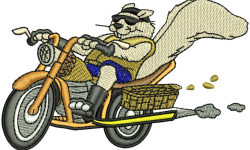
Our Services
Embroidery Digitizing
Embroidery digitizing services involve converting artwork or designs into a digital format that embroidery machines can understand and stitch onto fabric. This process is crucial for creating intricate and detailed embroidery on various items like apparel, hats, towels, and more. Here’s a brief overview of what embroidery digitizing services typically include:
File Conversion:
- Digitizers convert design files from common graphic formats (such as JPEG, PNG, or vector formats like AI or SVG) into a format compatible with embroidery machines. The common format for embroidery is DST (Tajima).
Stitch Types and Directions:
- The digitizer determines the type of stitches (e.g., satin stitches, fill stitches, or running stitches) and the direction in which they should be sewn to recreate the design accurately.
Color Mapping:
- Assigning thread colors to different elements of the design. This is crucial for achieving the desired appearance of the final embroidered product.
Density and Underlay:
- Controlling the density of stitches and adding underlay stitches to provide stability and enhance the quality of the embroidery.
Testing and Adjustments:
- Digitizers often stitch out a sample of the design to identify and rectify any issues such as thread breaks, distortions, or misalignments.
Size Adjustments:
- Resizing the design while maintaining its quality and ensuring that it fits the intended embroidery area.
Customization:
- Providing options for customization, such as adjusting stitch patterns, adding or removing elements, and making other modifications based on client preferences.
Vector Digitizing
Vector digitizing services involve converting raster images or other non-vector formats into vector graphics. Vector graphics are based on mathematical equations rather than pixels, which means they can be scaled infinitely without losing quality. This is particularly useful for logos, illustrations, and designs that need to be resized for various purposes, such as printing on different materials or resizing for digital platforms.
Here’s what vector digitizing services typically include:
File Conversion:
- Converting raster images (JPEG, PNG, etc.) or other non-vector formats into vector files. Common vector formats include AI (Adobe Illustrator), EPS (Encapsulated PostScript), SVG (Scalable Vector Graphics), and others.
Tracing and Paths:
- Manually tracing the outlines and shapes of the original image to create vector paths. This involves creating anchor points and curves to accurately represent the details of the design.
Color Separation:
- If the original image is in color, the digitizer will separate the colors into distinct vector layers. This is useful for applications like screen printing or other printing methods that require color separation.
Simplification and Clean-Up:
- Removing unnecessary details, cleaning up imperfections, and simplifying the design to ensure a clean and efficient vector representation.
Scalability:
- Ensuring that the vector graphic maintains its quality and clarity when resized, whether it’s enlarged for a large-format print or reduced for a smaller application.
File Formats:
- Providing the vector graphic in various file formats, depending on the client’s needs. Common formats include AI, EPS, SVG, PDF, and others.
Customization:
- Offering options for customization, such as adjusting colors, modifying shapes, or making other changes based on client preferences.
Whether you’re looking to digitize a logo, illustration, or any other graphic, vector digitizing services can provide a versatile and high-quality solution for your design needs.
Patch Digitizing
Patch digitizing services involve the conversion of a design, logo, or artwork into a digital format suitable for embroidery on patches. These patches can be used for various purposes, including uniforms, promotional products, and branding. The process of digitizing for patches is similar to general embroidery digitizing, but with some specific considerations:
File Conversion:
- Convert the design or logo file into a format compatible with embroidery machines. Common formats for patches are DST (Tajima) or any other format supported by the embroidery machine.
Size and Shape:
- Determine the size and shape of the patch. Patches can vary in dimensions, and the digitizer needs to adjust the design to fit the desired size while maintaining clarity and detail.
Border Considerations:
- Patches often have borders, and the digitizer needs to decide on the type of border (e.g., satin stitch or merrowed edge) and incorporate it into the digitized design.
Backing Type:
- Consider the type of backing material that will be used for the patch (e.g., iron-on, sew-on). The digitizer may need to make adjustments to ensure compatibility with the chosen backing.
Color Matching:
- Assign thread colors to different elements of the design. Color matching is crucial for achieving the desired appearance of the final embroidered patch.
Detail Optimization:
- Optimize the design for the specific constraints of patch embroidery. This may involve simplifying intricate details to ensure they are stitchable on a smaller scale.
Testing and Adjustments:
- Stitch out a sample of the patch to identify and rectify any issues such as thread breaks, distortions, or misalignments. This is especially important for patches where precision is key.
File Formats:
- Provide the final digitized design in the appropriate file format for the embroidery machine and for any future edits or reproductions.
When selecting patch digitizing services, it’s important to choose a provider with experience in creating embroidered patches. We have experienced digitizers who understands the specific requirements of patches, including border considerations, backing types, and color matching.
